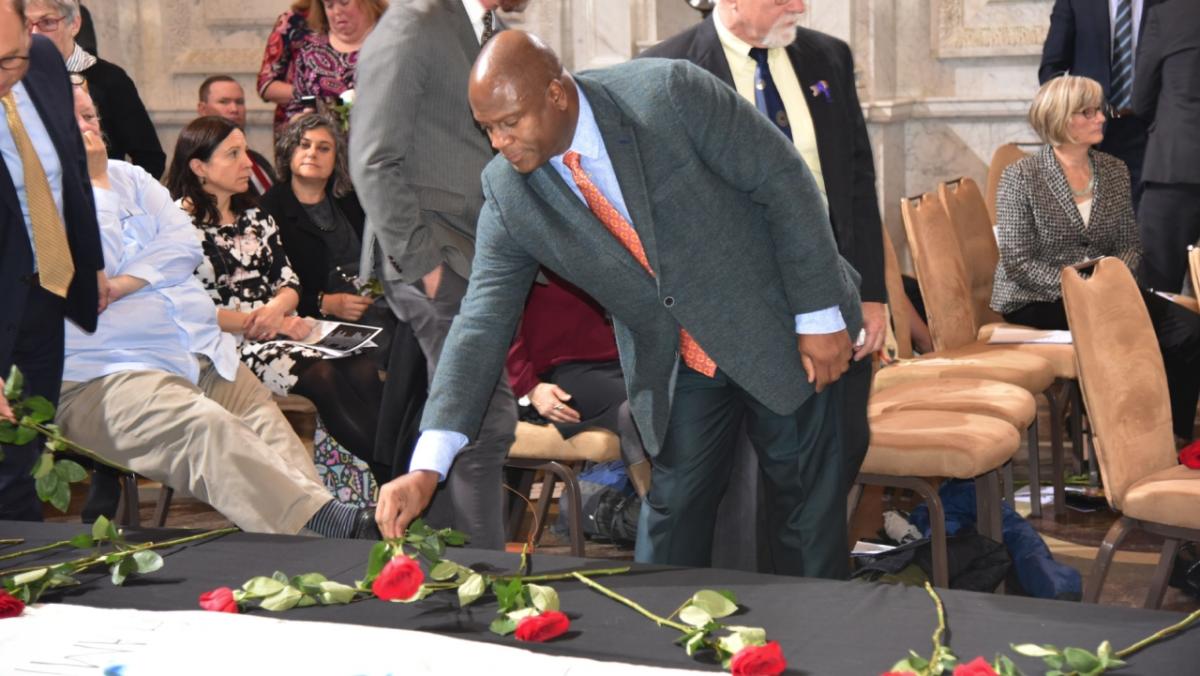Renewing Efforts to Educate New Communities in the Fight Against HIV
By Douglas Brooks, Executive Director, Community Engagement at Gilead

Every now and then, I allow myself to revisit a time when I feared hearing the phone ring. That such an ordinary occurrence could induce deep emotion reflected the environment in which many of us resided. Knowing that the call could easily be the news of another friend having died or having been rushed to the hospital sometimes froze me in place.
Exacerbating our trauma and pain, people so very young, was the silence and secrecy in which it all abounded. I attended funerals where people’s entire lives were erased, and the cause of their deaths shrouded in shame and stigma and stunning silence. There we were, left to grieve –and nowhere to honor the dignity and truth of their lives.
Along came the AIDS Memorial Quilt, or “the Quilt” as it was better known. We in the gay community, and perhaps even more importantly, mothers, grandmothers, aunts and friends from small towns across the nation, now had a place to memorialize our loved ones, with riveting, but also often wildly humorous and lovingly mocking epitaphs. A small movement, begun in the Castro district of San Francisco, became a national cemetery with panels the size of grave plots. It provided, and still provides, a place to honor our dead.
I am proud that late last year, around World AIDS Day, Gilead launched a new partnership with the National AIDS Memorial to bring the iconic AIDS Memorial Quilt back home to San Francisco. As part of the partnership, we will work to ensure the Quilt’s education programs reach communities and populations adversely impacted by HIV well beyond San Francisco.
For 36 years, grief has inspired the Quilt, one of the world’s largest art projects, which is made of more than 50,000 squares, each one commemorating the epidemic. The Quilt reminds us of the enormity of this health crisis, which is still critical. The Quilt continues to be a powerful symbol to fight prejudice, raise awareness, link hands with the global community and foster hope through education and prevention.
For many years, I have worked to address the epidemic. In 2015, while I was serving in the White House as the National AIDS policy advisor, we updated the National HIV/AIDS Strategy with a plan through 2020, setting ambitious national goals for testing, linkage to care, support for those living with HIV and access to prevention services. In 2019, President Trump set a new goal for the nation: ending new transmissions of HIV by 2030. This goal, once thought impossible, is very much in reach.
However, there is more work to be done. Stigma remains one of the biggest obstacles to combating HIV in the United States and around the world. Throughout my life, I’ve joined communities impacted by the HIV epidemic across the country – often in the face of hate and discrimination. While our optimism and courage know no bounds, we now require an effort to reach new communities and educate a new generation.
As I learned from my government work, the private sector provides a vital platform to advance the conversation and create change.
We know that one of the most effective ways to change perception and opinions is through art and culture, and we believe educational efforts such as this partnership with the National AIDS Memorial will encourage the next generation to act with the urgency this challenge still requires.
It breaks my heart that so many of my friends are no longer here to share in this experience. Surely, they are somewhere dancing, admiring the rich community of fighters we’ve built. I miss them deeply, but fight ever harder in their absence.
Douglas Brooks is the Executive Director, Community Engagement at Gilead. He formerly served as the head of the White House’s Office of National AIDS policy under President Barack Obama.

